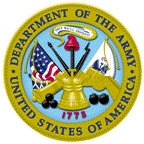United States Department of Defense
Document Type
Article
Date of this Version
2012
Citation
Published in Laryngoscope (2012) 122:425–428. DOI: 10.1002/lary.22423
Abstract
Objectives/Hypothesis: To evaluate and describe airway complications in pediatric adenotonsillectomy.
Study Design: Retrospective case-control study.
Methods: A chart review of patients that underwent adenotonsillectomy between 2006 and 2010 was performed. Perioperative complications, patient characteristics, and surgeon and anesthesia technique were recorded.
Results: A total of 682 charts were reviewed. Eleven cases (1.6%) of laryngospasm were identified: one was preoperative, seven occurred in the operating room postextubation, and three occurred in the recovery area. Four patients were given succinylcholine, one was reintubated, and the other cases were managed conservatively. Mean age of patients with laryngospasm was 5.87 years (standard deviation [SD], 4.01; 1.9–15.8 years). There were 12 cases (1.8%) of bronchospasm; all were treated with nebulized albuterol. Mean age of patients with bronchospasm was 5.81 years (SD, 4.17; 1.8–14.1 years). Overall, 22 patients required antiemetics (3.3%), 19 required albuterol (2.9%), and five required racemic epinephrine (0.8%). Compared to the children without airway complications, there was no difference in age, weight, American Society of Anesthesiologists status, length of surgery, need for admission, and anesthesia technique in those that had laryngospasm. Patients with bronchospasm, compared to the patients without complications, had faster surgeries (P < .05), were more likely to have underlying asthma (P < .05), and were more likely to be admitted (P < .05). There were no unexpected admissions or other morbidities.
Conclusions: The rates of laryngospasm (1.6%) and bronchospasm (1.8%) are significantly lower than reported in the literature, reflecting refinements in modern anesthesia/surgical technique. Knowledge of at-risk patients can facilitate planning to potentially reduce the incidence of perioperative airway complications during adenotonsillectomy.


